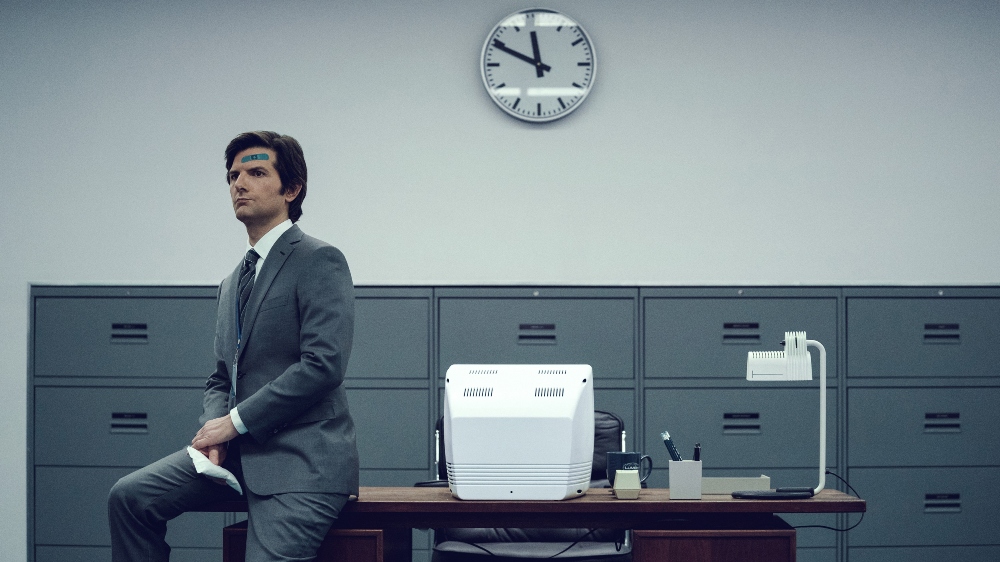
In case you haven’t noticed, the Apple TV+ series Severance has been drawing rave reviews over the course of its mysterious first season. Ben Stiller (Escape From Dannemora) has been directing the sci-fi thriller, which hails from creator Dan Erickson and stars Adam Scott, Britt Lower, Zach Cherry, John Turturro, Christopher Walken, and Patricia Arquette.
Severance takes place in a world where a seemingly evil corporation, Lumon Industries, has developed a technology that severs its employees’ work memories from their non-work memories, should they choose to undergo the process. As the show develops, protagonist Mark Scout (Scott) slowly uncovers a sinister conspiracy on both sides of the divide, all while grappling with his own disjointed and bifurcated memories.
As the setup implies, Severance mostly takes place in two vastly different worlds — the “outside” world set in modern society, and the world inside of Lumon Industries, which offers a staid, quiet, and minimalistic workplace setting that is, presumably, deep underground.
Last week, Below the Line spoke to show’s veteran Production Designer Jeremy Hindle about creating Severance’s unique visual aesthetic. Hindle, who was the production designer on Kathryn Bigelow’s Zero Dark Thirty, also gave us a preview of what we can expect from his next feature, which just so happens to be one of this summer’s biggest blockbusters — Top Gun: Maverick. Fly with us below…
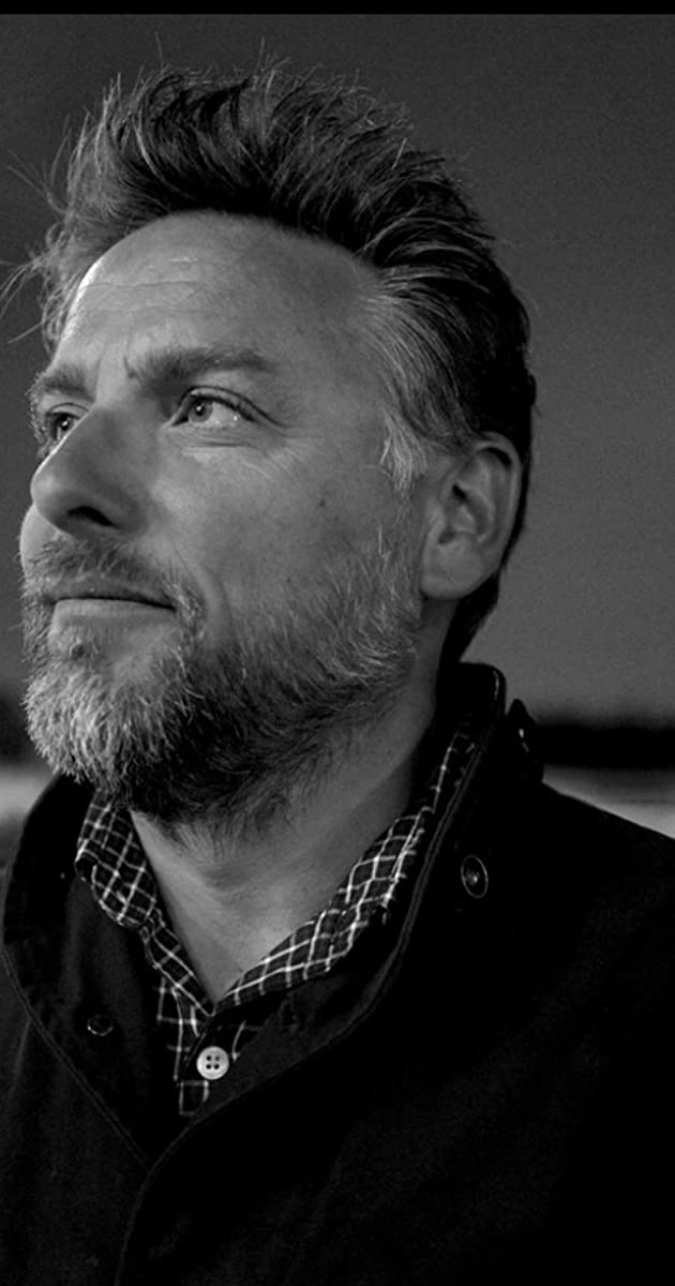
Below the Line: Jeremy, everyone is raving about Severance, so congrats on that. How did you find your way onto the series?
Jeremy Hindle: I met Ben through the cinematographer, Jessica Lee Gagné, [as] she and Ben were working on it already. They were looking for a production designer and she recommended me to him. I talked to him on the phone, we had a great chat, he sent me the scripts, and I read them and loved them. I thought it was my Twin Peaks. I had never done a series and wanted to do something with a long, slow-burn effect. I thought it was hilarious.
I put together a book for him about how I saw the show, really quickly. We met and he was on the same page. We had the same ideas about making it visually interesting, about pushing the boundaries a little. I wanted it to be playful and in my look book, I actually referenced the movie Playtime, a 1960s movie by Jacques Tati. Their art department was strange and interesting. The question was, ‘what’s the tone of the show?’ It read like an office show, which was terrifying because there is not always much to design, so I decided to push it. And Dan’s scripts were so fun, it was great to push it further.
BTL: What exactly was in that book you showed Ben, and why?
Hindle: The first image I had was a reference of William H. Macy walking in a parking lot in the snow in Fargo. There was a grand landscape and a tiny guy. A small guy, an ant farm, like experimental. So the idea was to make Adam Scott look small on the inside. And I had the idea of the John Deere headquarters in Chicago as well, for the interior, I love the inside and architecture of that building. And we wanted to take it back to work being just work. You have a pen, a phone, a computer, and a Rolodex. That’s it. There’s no family life. Those environments were really beautiful and powerful. They were highly designed, and designed to inspire you. They inspired the people that came to them, and we fell in love with that approach. Time Magazine also has a lot of 1960s and 1970s offices, and [I loved] how professional it was. So, we thought, ‘if you’re going to create this world underground, this is what it would look like.’
And then when we were filming in New York, Bell Labs came up as an option for us. It had been restored. I thought it was defunct, but someone had restored it and it was empty and they let us use it and it was amazing. It was designed by Eero Saarinen, it’s in New Jersey obviously, and it’s just amazing, because, of course, he also designed John Deere. A lot was inspired by him. It was the same vibe, the same landscape, and feeling. The exterior is mind-blowing.
Of course, the interior is on a stage, but we design it in this same vein — grand, eerie, but beautiful.
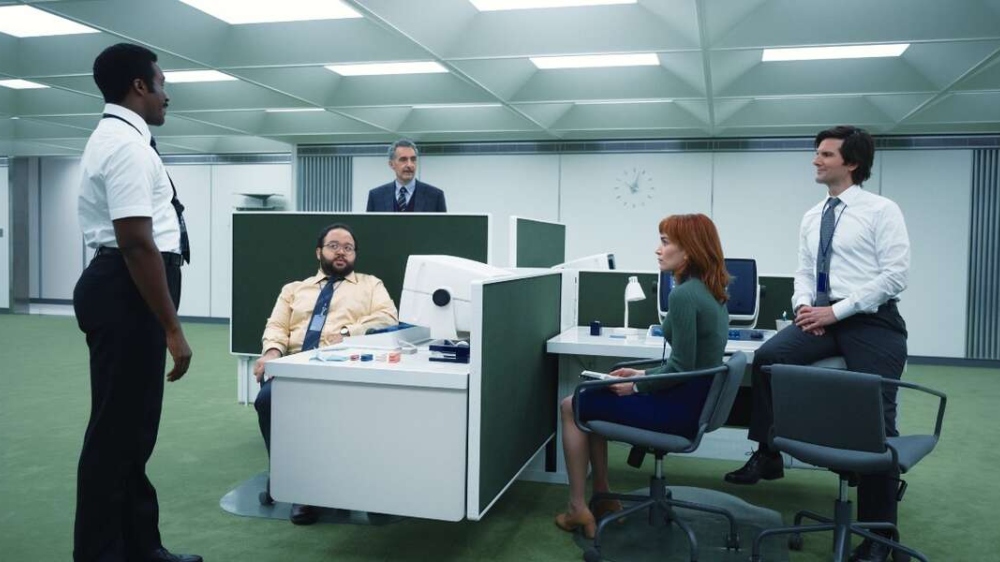
BTL: What contrast did you draw, then, to the outside world?
Hindle: Well, inside, it’s all on quite a wide lens. They shot on completely [wide] lenses, that was a lot of Jess and Ben. The colors were always going to be quite subdued, except maybe for Ricken, the character played by Michael Chernus, because he has a lot of red on his face. So a little brighter colors for him. The Frank Lloyd Wright house. The Pleasantville situation. He’s the far-left of the story.
For Mark’s place, we looked at like, 70 locations. We tried to find one that had not just the right color, but the right vibe. When we landed on the location where it is, all the houses were so different even though they were attached. It felt so fractured as you went down the hill that it felt like his brain. You had this great view of fracture. That’s instinctively what felt correct. It’s the opposite of what is underground, where it’s all linear, for the most part.
BTL: How did you approach designing the set?
Hindle: I love to create rules when I design and I had one for this. Anything they see underground, you cannot have seen before. It has to have been designed by them. I asked Dan how far down the world goes and he said, ‘Oh, it goes for miles.’ We decided that everything should be manufactured by them. They did not buy things on Amazon, because people would know what they were doing. This way, they don’t exist, in the rule. So that was a fun rule.
And take the desks, as an example. The script says there are four desks in a large room. Well, let’s make this interesting. They’re like children being born into the womb of the office. So let’s give them some desks that they can manipulate in a playful way, like they’re children. It also makes it playful, [because] otherwise, desks are boring. So it’s part-style, but also the necessity to give the actors a lot of room to play in that space. It’s supposed to be playful and fun. So, of course, that means we designed and produced all of these desks from scratch. Mostly aluminum and steel. They weighed a ton. It was an homage to the Kevin Roach desk in John Deere. It was super sturdy so the actors could sit on it without shaking it all.
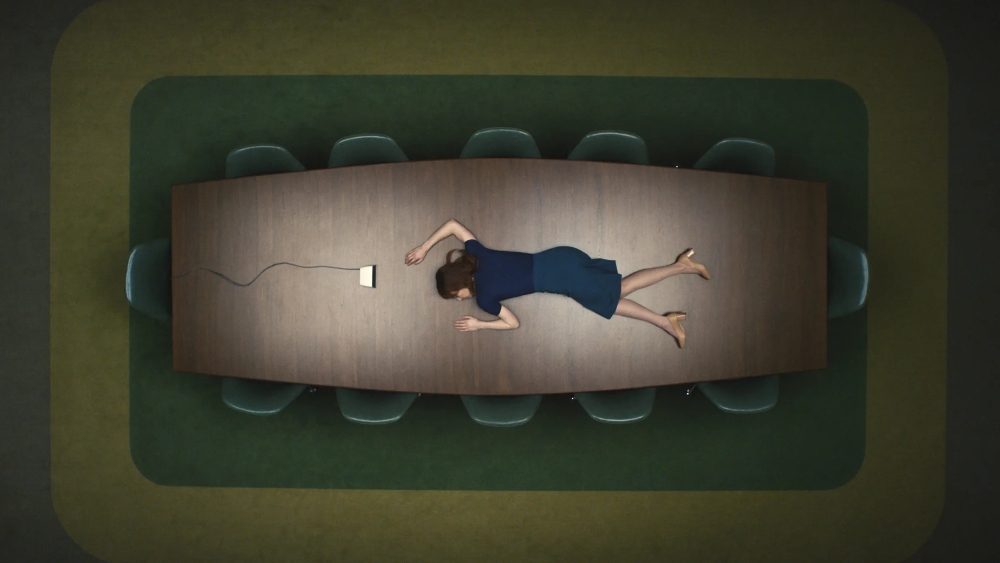
BTL: So did you source anything for the outside world?
Hindle: Yeah, that was more known stuff. The tricky stuff was inside — either find things no one has ever seen or make them ourselves. Dan wrote this brilliant script where we don’t know when it is, but it does not matter. The concept is interesting enough. When they’re underground, they have no idea who they are or what they are, they’re just children. They’ll never see the sky. You can create whatever you want for their world. Even the computers are built from scratch, all slightly odd.
BTL: What was the hardest part of designing this world for you, and can you describe your collaboration with your fellow below-the-line artists?
Hindle: Honestly, it was a blast. Ben was so collaborative. The DP was already on. We had four concept artists. The only thing that was tricky was time, and then COVID came up. We shut down two years ago on the weekend in the middle of everything. We worked remotely for months and months. But we were all on the same page — Jessica, Ben, and I had the exact same taste. The lighting was so beautiful, shot like a film. And Sarah Edwards’ wardrobe brings in these amazing colors through Helly, Brit’s character. It all jived well with my ideas. My favorite was that Ben was willing to push and explore new ideas. And Aoife McArdle, who directed other episodes, was great to work with, too.
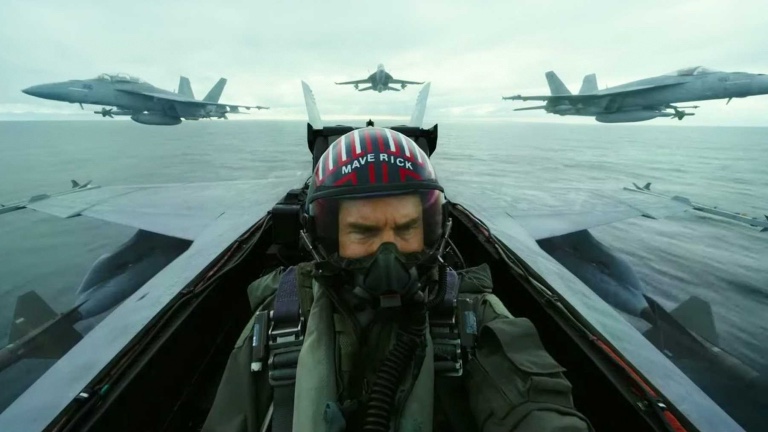
BTL: What can you tell us about Top Gun: Maverick, which looks like it’s actually prepping for takeoff in May?
Hindle: I can’t believe it’s going to Cannes! I don’t even know if I’m going there. It would be fun. It was another tricky one. When I was first asked to do it, I said, ‘Wow, that’s a tricky movie.’ The first one is cheesy — it’s awesome, and one of the best movies ever, but cheesy. Not all of it was intentional. It just somehow worked. So how do you replicate that? It’s very hard. I wanted to do [something] spectacular, keeping the nostalgia but making it contemporary.
So what I can tell you is that we tried to do a lot of it in-camera. Not visual effects. What you see in the jets is in the jets. And Joe [Kosinski], the director, is a visual effects guy from Tron, but still, that was not his approach. Obviously, there are effects for cleanup, but we wanted most things on camera.
If someone said to me, ‘Why bother with the plane, we can change it later,’ I would say, ‘Why would I not build it? Tom [Cruise] loves it. Joe loves it.’ If you build it and commit to it, people will [believe] and I want it to feel like the characters are really there. It’s very enjoyable like that.
I think people are going to be blown away. I’ve seen it five times, including one private [screening] in IMAX. My daughter, who had never seen the original, was blown away and was crying. My son was really into it. My wife also cried.
The highly-anticipated season finale of Severance will premiere on Friday, April 8 at approximately 2:01 a.m. ET on Apple TV+.





